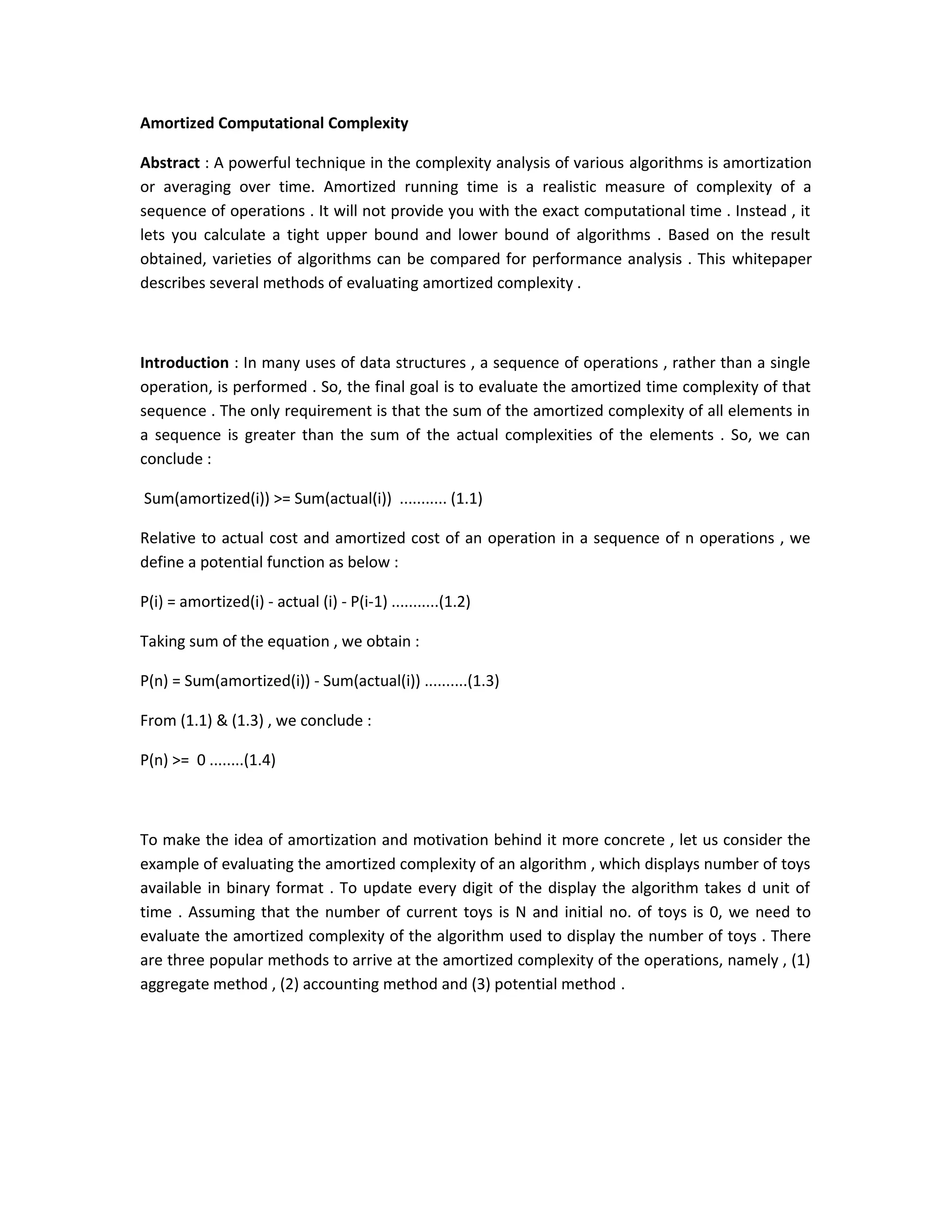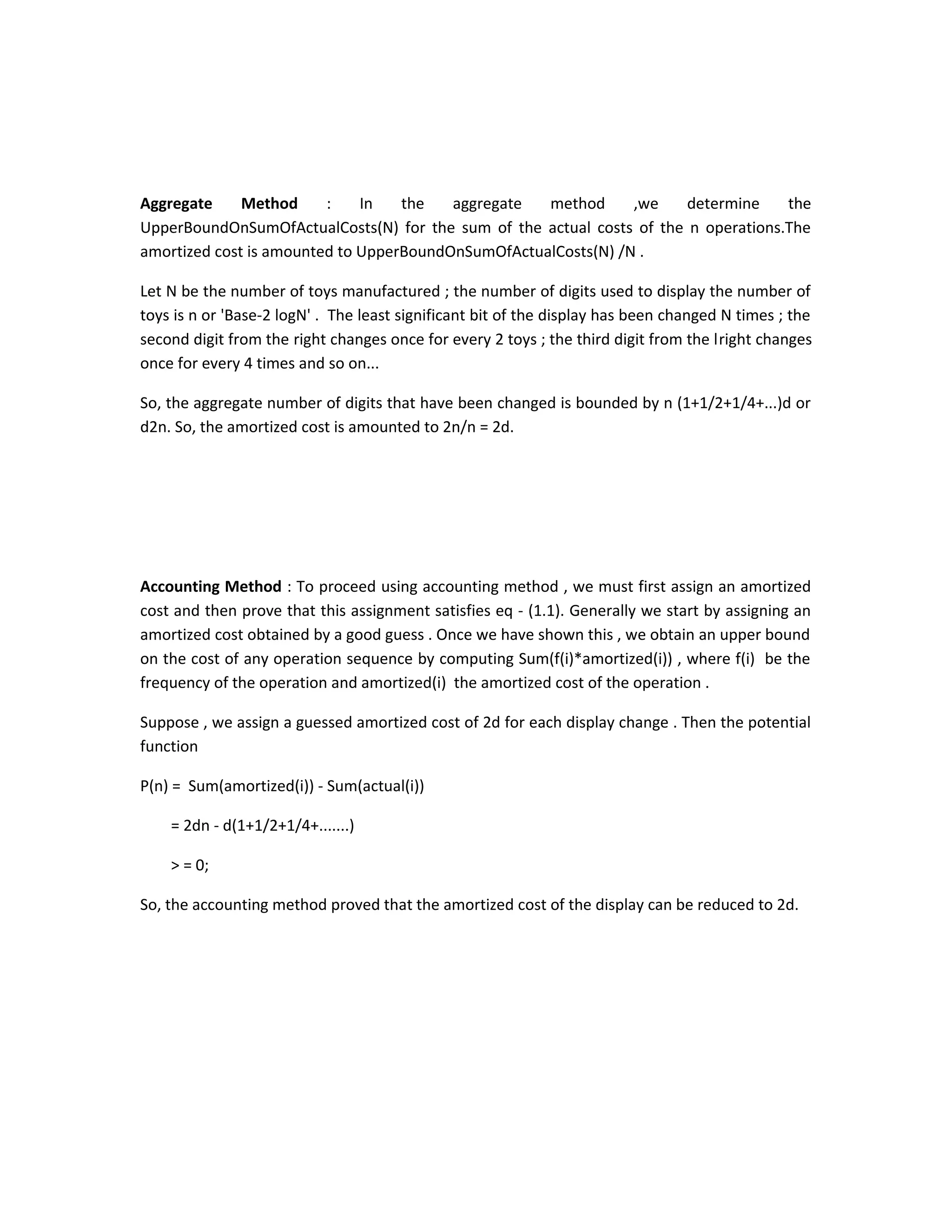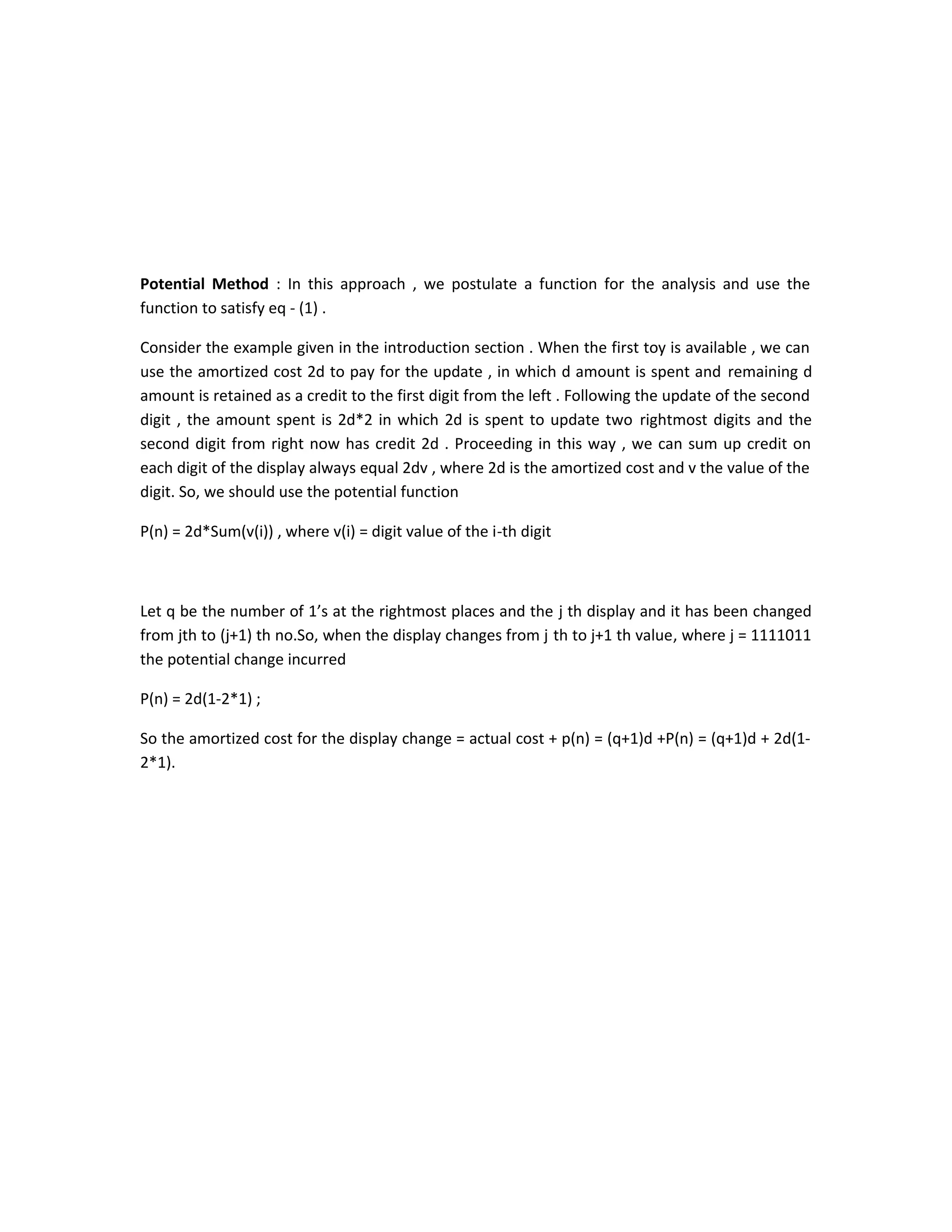This document discusses amortized computational complexity and describes three methods for evaluating amortized complexity: the aggregate method, accounting method, and potential method. As an example, it analyzes the amortized complexity of an algorithm that displays the number of toys available in binary format, finding an amortized cost of 2d using each of the three methods. Amortized analysis averages running time over operations to provide a realistic yet robust measure of an algorithm's complexity.



